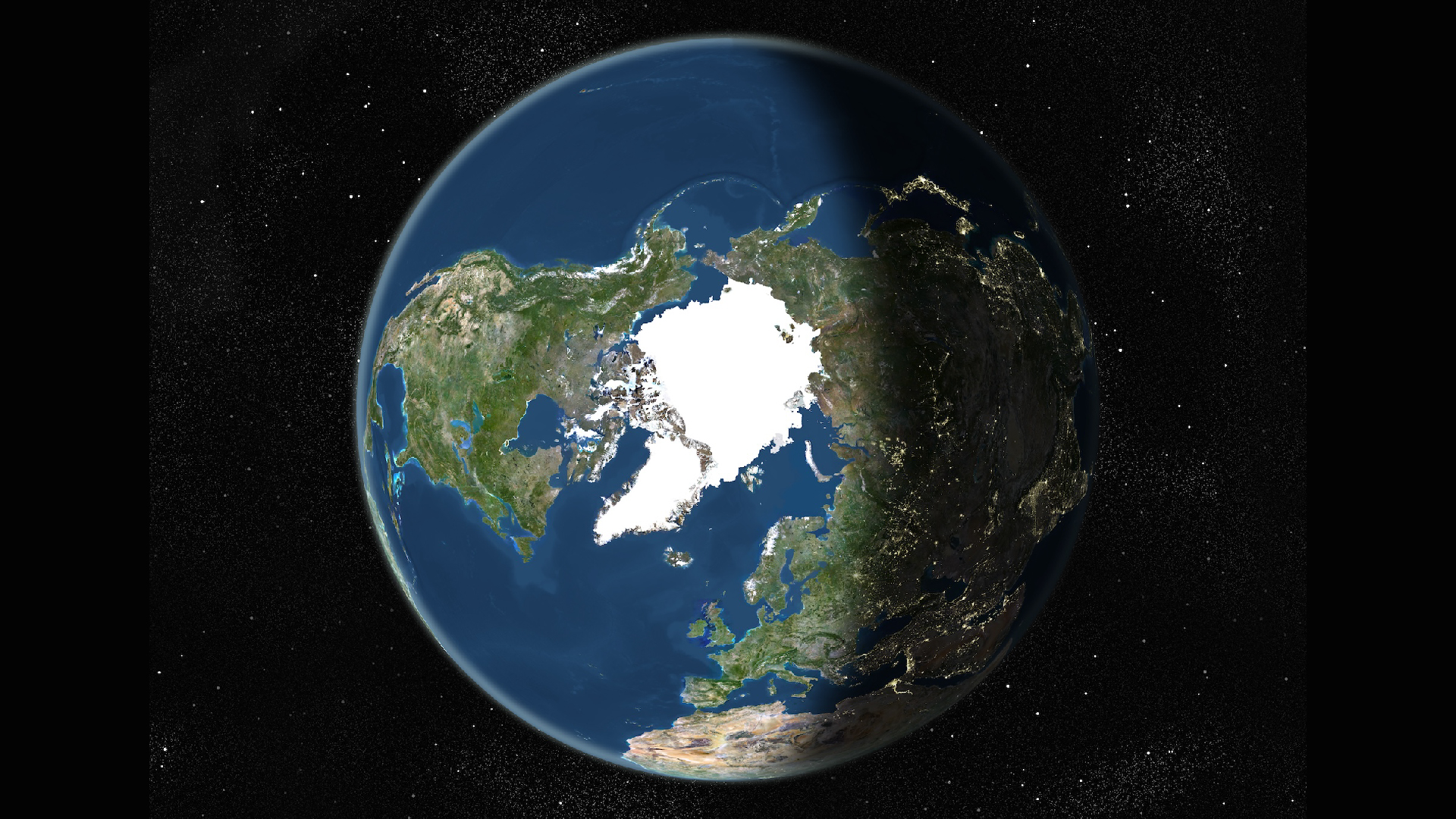The position of the magnetic north pole is officially changing. Why?
The updated version of the World Magnetic Model was released on Dec. 17, with a new prediction of how the magnetic north pole will shift over the next five years. Here's why it was changed.

On Dec. 17, the National Centers for Environmental Information (NCEI) and the British Geological Survey (BGS) released an updated version of the World Magnetic Model, a prediction for how Earth's magnetic field will shift and change over the next five years.
The World Magnetic Model, which predicts the difference between magnetic north and true north at every point on Earth, plays an integral role in satellite and aircraft navigation and helps smartphone users orient themselves using services like Google Maps.
The update has been planned for years, and most users won't notice anything different as a result of the changes. But the changes are necessary to keep navigational systems functioning and to make better future predictions about Earth's magnetic field.
Why does Earth have a magnetic field?
Earth's main magnetic field is generated in the planet's outer core, a layer of molten iron 2,2001,800-3,100 miles (2,890-5,000 kilometers) below the planet's surface. The electrically conductive liquid iron is in constant motion, and when it moves through an existing weak magnetic field, that motion produces an electric current. The electric current in turn generates its own magnetic field, leading to a self-sustaining process known as the geodynamo.
Related: Earth's rotating inner core is starting to slow down — and it could alter the length of our days
The geodynamo has continually regenerated Earth's magnetic field for billions of years. Without something to sustain the field, Earth would have lost its magnetic field after about 40,000 years, said Bruce Buffett, a geophysicist at the University of California, Berkeley.
"If you had a hot cannonball and you put it on the table, it would gradually cool. [The heat] would diffuse away and essentially go back to ambient," Buffett told Live Science. "The same is true with the magnetic field. If you're not sustaining it by these fluid motions, it will gradually decay away and disappear."
Sign up for the Live Science daily newsletter now
Get the world’s most fascinating discoveries delivered straight to your inbox.
Where is the magnetic north pole?
The magnetic north pole is different from the geographic North Pole, which is always stationary. The geographic North Pole is the point where Earth's axis of rotation meets the planet's surface and where all lines of longitude converge. The magnetic north pole, meanwhile, is the point in the Northern Hemisphere where Earth's magnetic field lines point directly into the planet.
The complex motion of the outer core causes the magnetic north pole to shift tens of miles per year. Because Earth's magnetic field is slightly asymmetrical and more complex than that of a regular bar magnet, the magnetic south pole — the point in the Southern Hemisphere where the magnetic field points straight into the planet — doesn't move in quite the same way. But changes in the strength of the magnetic field near the North Pole have caused it to shift from the Canadian Arctic toward Siberia in recent years.
What is the World Magnetic Model?
The World Magnetic Model is a mathematical model of Earth's magnetic field and a prediction for how the field will evolve over the next several years. The model combines data from satellites such as the European Space Agency's Swarm mission and from high-precision magnetometers at ground-based observatories to predict the magnetic field at each point on Earth.
Navigation apps use the World Magnetic Model along with GPS to orient users. "Your smartphone or GPS system has a magnetometer, effectively a digital compass built into it," said William Brown, a BGS geophysicist who helped create and update the World Magnetic Model. "It measures the direction of the magnetic field where you are, and it enters your position into the World Magnetic Model software to tell it what the magnetic field should look like. And then, by comparing what I measured and what I should have got, you can work out which direction you're facing."
Why is the World Magnetic Model being updated now?
A new version of the World Magnetic Model is released every five years to account for changes in the magnetic field from the motion of the outer core. This latest update is part of that five-year schedule.
"The real challenge is, and the reason why we release a model every five years, it doesn't change in a regular way. It's not completely predictable. It's a really complicated, chaotic system," Brown told Live Science. "Typically, about five years is when the accuracy of the model starts to get to the point where it's not as good as we would like it. So we make a better prediction with five years more information to work from, and just update the prediction going forward."
Small deviations from the predicted field can accumulate over time and occasionally compound to the point where the model must be updated more frequently. For example, the NCEI and BGS released an off-cycle update in 2019 to account for the outer core flowing faster than usual in the Northern Hemisphere — a phenomenon that caused the magnetic north pole to shift much more quickly than usual.
But for most people, the 2025 update won't result in any noticeable changes to navigation, and users won't have to change anything for phone map apps to work properly.
"You should be able to navigate as well as you could yesterday," Brown said. "We keep the updates coming so that it's only a bit of time, small enough that most people don't notice, because for most users, the accuracy is more than they need anyway."

Skyler Ware is a freelance science journalist covering chemistry, biology, paleontology and Earth science. She was a 2023 AAAS Mass Media Science and Engineering Fellow at Science News. Her work has also appeared in Science News Explores, ZME Science and Chembites, among others. Skyler has a Ph.D. in chemistry from Caltech.









